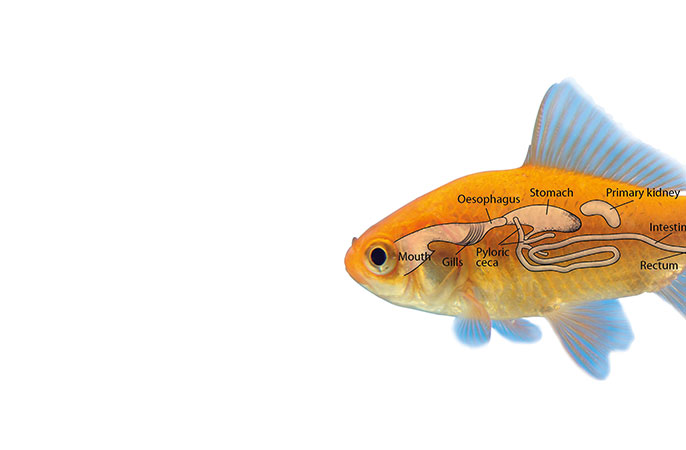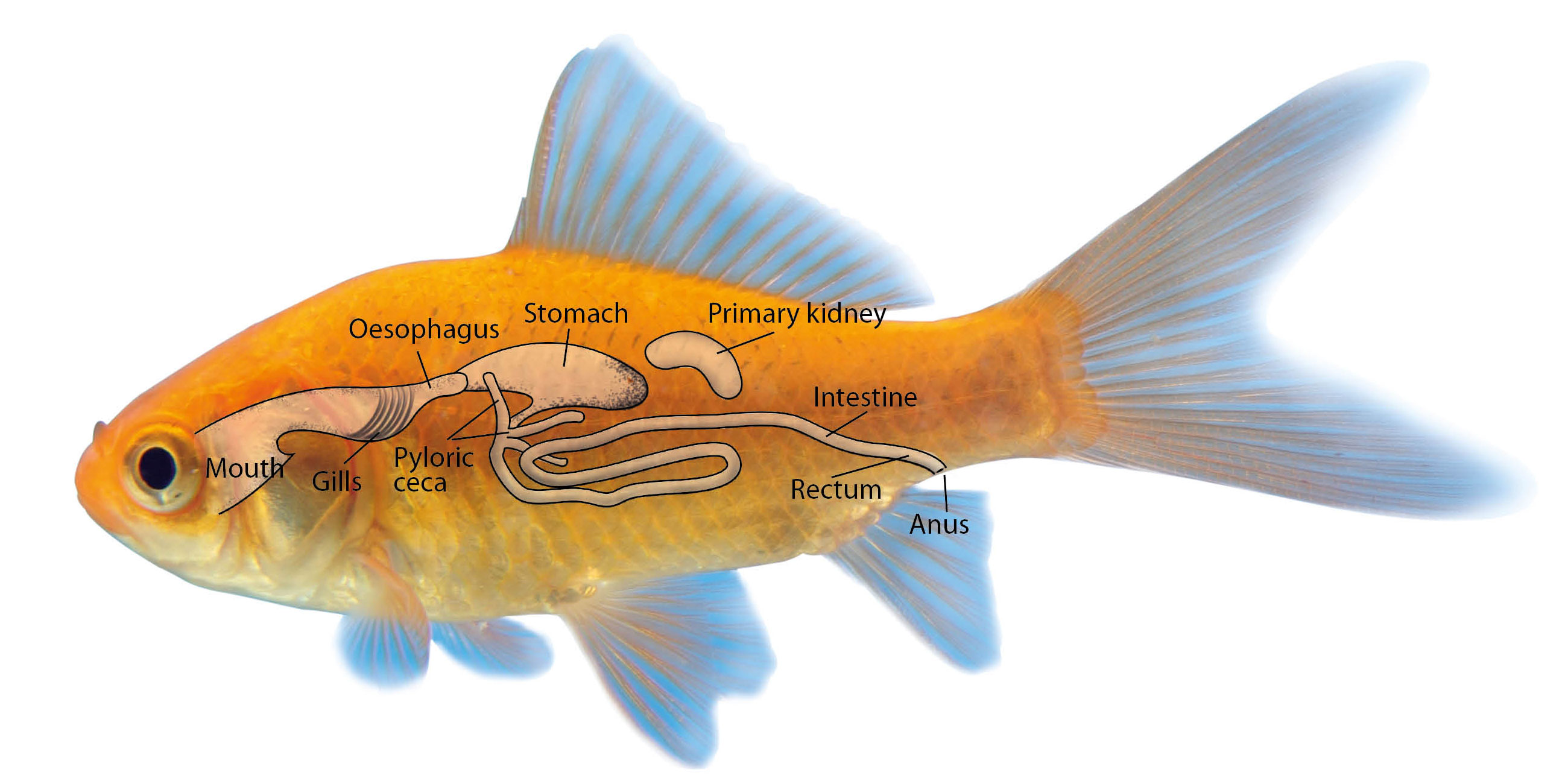- Products
- Help & Advice
- Blog
- 10 things to avoid with your new fishBringing home a new fish is exciting, but there’s also lots to think about. To help you out, we’ve listed 10 things to avoid with your new fish.

- How to maintain good water quality in your fish tankTop tips on maintaining good water quality in your fish tank

- Why is water quality such a big issue when it comes to fishkeeping?Why is water quality such a big issue when it comes to fishkeeping?

- All Blog Entries
- 10 things to avoid with your new fishBringing home a new fish is exciting, but there’s also lots to think about. To help you out, we’ve listed 10 things to avoid with your new fish.
- Store Finder
- Trade Enquiries
- Contact Us
How does a fish digestive system work?

Have you ever wondered how your fish digests it's food? If you have, read on as we've put together a step by step process guide that is easy to digest!
- The first element of the digestive system is the mouth. Each different type of feeder will have a specific mouth suited to their diet and feeding behaviour.
- The oesophagus in bony fish is short and expandable so that large objects can be swallowed. The oesophagus walls are layered with muscle and lead to the stomach.
- The stomach varies greatly in fish, depending upon the diet. In most predacious fish, it is a simple straight or curved tube or pouch with a muscular wall and a glandular lining. Food is largely digested there and leaves the stomach in liquid form.
- The junction between the stomach and the intestine is marked by a muscular valve called the ‘pyloric ceaca’. It has a digestive and/or absorptive function.
- The intestine itself is quite variable in length, depending upon the fish’s diet. It is short in predacious forms, sometimes no longer than the body cavity. In herbivorous fish it is typically coiled and several times longer than the entire length of the fish. The larger its internal surface, the greater its absorptive efficiency. Most fish only have one size intestine instead of a 'large and small' intestine like mammals.
- The primary excretory organ is the kidney. Excretion also take place in the gills where ammonia is given off and released directly into the water.
- Food that is not completely digested and absorbed leaves the body through the anal opening/cloacae, in addition to other waste produced by digestion.
By feeding a high quality food with easily accessible proteins your fish will be able to absorb more nutrients and will produce less waste. This results in not only in healthier, happier fish, but also cleaner, clearer water.


